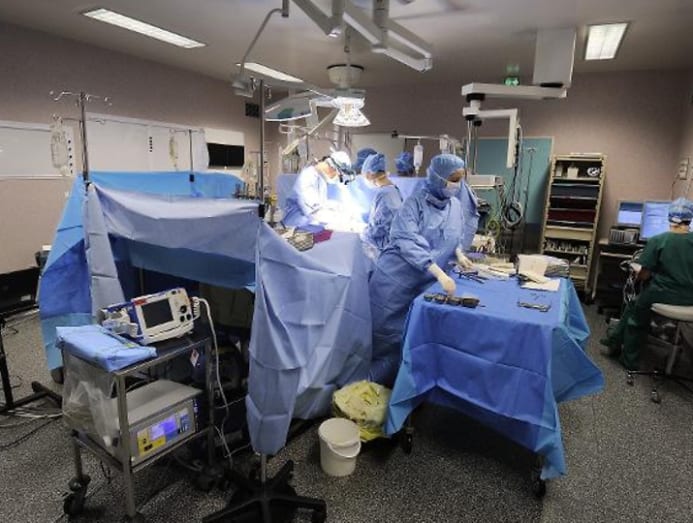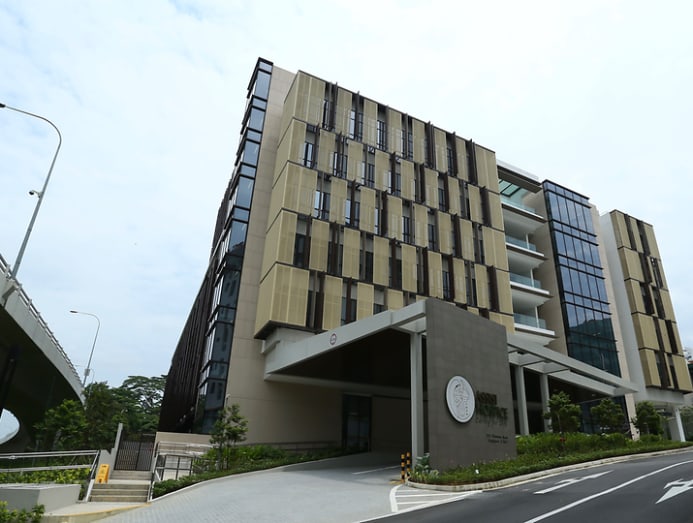commentary Commentary
Commentary: What is well-being for someone who is terminally ill?
How you define well-being when facing a terminal illness really depends on your values and priorities, says palliative care expert Dr Grace Yang.

Senior Minister of State for Health Chee Hong Tat said that the ministry was working with non-governmental organisations to improve public awareness, as well as enhance the quality and accessibility of palliative care, at the Committee of Supply debates in April. (Photo: Reuters)
SINGAPORE: In the recent Committee of Supply 2017 debates in Parliament, Senior Minister of State for Health Chee Hong Tat spoke of increasing capacity in the palliative care sector so that “more Singaporeans with terminal illnesses can benefit from palliative care services”.
As more resources and manpower are channelled to this healthcare sector, I sense more Singaporeans asking what palliative care is and how it can benefit patients and their families. More frankly, is it possible for someone to still live a good life when he or she has a terminal illness?
As a palliative care doctor, I often hear patients and their family members say “Doctor, you must do everything”, when they receive dreaded news that the patient’s medical condition is terminal. This is understandable: Families and friends all want the best medical treatment for their loved ones, no matter what the financial costs are, so that he or she can live a little longer and spend more time with them.
The patients themselves have future plans and long-term goals that did not factor in a terminal illness cutting their time short, and want to live a little longer.
A little longer so that a mother can see her child grow up and graduate from school. A little longer so that a father can see his daughter get married. A little longer so that a grandfather-to-be can witness the birth of his first grandchild.
Indeed, medical technology can sometimes offer options to prolong a person’s life and address health problems directly. A surgical procedure can remove a brain tumour for instance. However, the risk to the patient is the possibility of losing some capabilities depending on which functions are controlled by the part of the brain closest to the tumour.

For example, removing the brain tumour may mean losing the ability to speak. In other cases, a longer lifespan may come at the cost of being bedbound and needing assistance with daily living activities for the entire length of a person’s life, with the person consequently losing a sense of autonomy and independence.
There are always trade-offs.
“NOT SIMPLY WHETHER TO LIVE OR DIE BUT WHAT KIND OF LIFE IS WORTH LIVING"
“At those critical junctures, the question is not simply whether to live or die but what kind of life is worth living," said Dr Paul Kalanithi, a neurosurgeon at Stanford University. Paul was diagnosed with lung cancer and wrote the book When Breath Becomes Air, which became a New York Times bestseller. He passed away in March 2015 at the age of 37.
In his book, Paul shared his experience of persevering with his neurosurgical training and having a baby while undergoing treatment for cancer. His wife Lucy Kalanithi said: “Even while terminally ill, Paul was fully alive; despite physical collapse, he remained vigorous, open, full of hope not for an unlikely cure but for days that were full of purpose and meaning."
The Kalanithis’ story show us how we can live well in the face of terminal illness. For it depends on which values we hold dear, which shape our priorities and the choices we make.
Some may want to pursue medical treatment so that they can fulfil specific life goals before time runs out, despite the financial and personal costs. Others may want to stop work in order to spend time with family or reconnect with their own spirituality.
A terminal illness may even bring renewed energy and a sense of urgency to work on a meaningful project. For Dr Paul Kalanithi, his terminal illness led to him completing his neurosurgical residency training despite long hours at work. It also led to him and his wife having a baby even though “saying goodbye to your child would make your death more painful”.
WHAT MAKES LIFE WORTH LIVING? WHAT MAKES A TREATMENT WORTH TRYING?
Regardless of our individual goals, holistic care for people facing terminal illnesses will have to include not only medical treatment that improves the biological health of a person including chemotherapy and various surgical procedures, but also palliative care.
But what is palliative care? According to the Centre of Advance Palliative Care in the US, palliative care is defined as “an extra layer of support” to “improve the quality of life for both the patient and the family” that is “appropriate at any age and at any stage in a serious illness and can be provided along with curative treatment”.
Palliative care is a growing healthcare field internationally, as both public awareness and dedicated resources in this area increase. In Singapore, as the capacity, accessibility and quality of palliative care improve, we will hopefully increasingly be able to live well and lead better lives in the face of terminal illness.

One important aspect of living well is having meaningful relationships with our loved ones. Chief executive of Assisi Hospice Choo Shiu Ling said: “Advanced dementia and life-threatening conditions impact patients and their caregivers more significantly as they not only have to deal with disease symptoms, but also the loss of personhood, life aspirations and cherished interactions with their families.”
It is useful therefore that palliative care aims to foster meaningful interactions with loved ones through better management of pain and discomfort that accompanies symptoms such as breathlessness, as well as better emotional support for caregivers and patients. This second part is just as important as the first.
For it includes having serious conversations between doctors and patients and their families on what the treatment options are and the trade-offs involved in prolonging a person’s lifespan, which may bring more suffering after a painful procedure or because of medication side-effects. Ultimately, these necessary but difficult discussions help patients decide for themselves what makes life worth living and what makes a treatment worth trying.
Such serious conversations that reaches into the depths of a terminally ill patient’s hopes and fears can in turn help doctors formulate a treatment plan that is in line with the patient’s values and has the best chance of helping patients achieve their goals. So palliative care can help patients make the most of life even in terminal illness.
To me, when we are able to live well, then we can honestly say that we have well-being.
This well-being stems from knowing that we have not wasted our lives but have used it for good, that we have spent quality time connecting with loved ones and that at the end of the day, with a life well-lived, we find peace within ourselves.
Dr Grace Yang Meijuan is a consultant at the National Cancer Centre of Singapore’s Division of Palliative Medicine.





